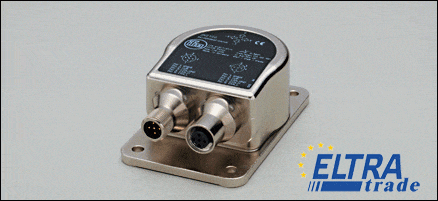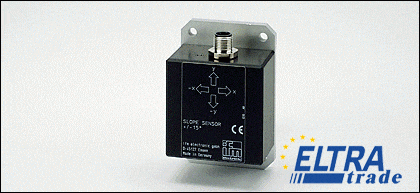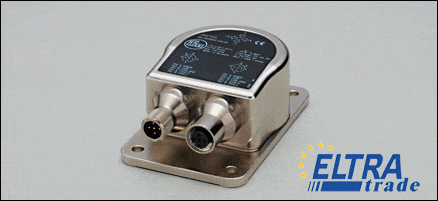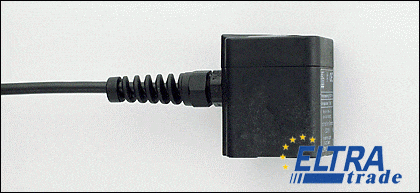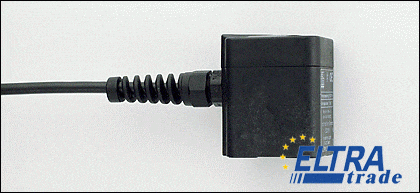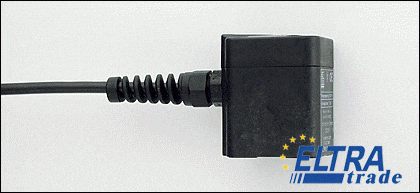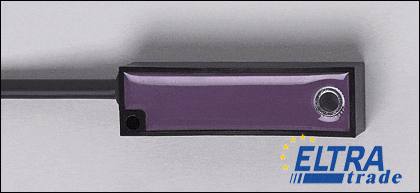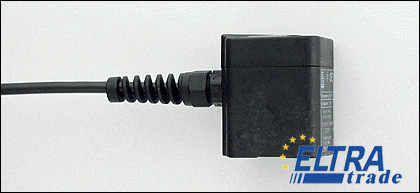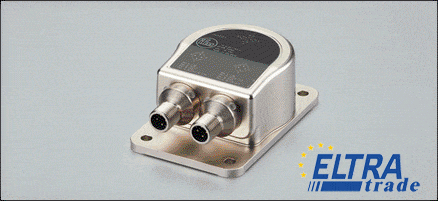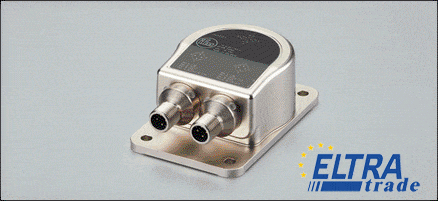IFM Inclination Sensors
Inclination sensor, ± 45°, CANopen interface, Self-test function, Heartbeat, Emergency messages available
R360/INCLINATION SENSOR/CAN
R360/INCLINATION SENSOR/CAN
Inclination sensor, ± 45°, SAE J1939 interface, Self-test function, Diagnostic Trouble Code (DTC) available
R360/INCLINATION SENSOR/CAN
IFM Inclination sensors and inclinometers ✦ Full catalog: ✓ Static and dynamic sensors ✈ Fast shipping ➦ Buy from €81.04 Check for discounts!
Inclination sensors are used to precisely determine the angle of inclination of equipment and machinery. They are typically used in mobile equipment such as cranes or mobile towers with working platforms, construction machinery, material handling equipment, and in the field of renewable energy. Sensors like vehicle inclination sensor, lazer inclination sensor, and others, support individual adjustment of the measuring range and output data according to the requirements of the application.
The inclination sensors are available in
- 1 or
- 2-axis versions.
IFM offers devices with a switch output, analog output, combined switch, analog output, and IO-Link or CAN interface. Let's take a closer look at inclination sensors and how they work.
What is an Inclination Sensor?
Inclination sensors from the IFM measure the angle of the object in relation to gravity, i.e. are absolute. These sensors determine the pitch and/or roll angle and provide these values via a selectable electrical interface.
One of the biggest advantages of inclination sensors is that they can be easily integrated into any application since, in addition to fixing the sensor itself, no complex mechanical connection to the machine is required.
Types of Inclination Sensors?
There are two types of inclination sensors that we will talk about below.
Static inclination sensors
Horizontal alignment of machines or machine parts is often an important requirement for reliable operation. Inclination sensors based on the principle of static measurement are designed to determine the angular position or leveling of stationary mobile machines. They are typically used to determine the position on work platforms or to level mobile cranes or excavators. Industrial applications include solar panel tracking systems.
Dynamic inclination sensors
In many applications, inclinometer sensors are subject to rapid movements, sudden shocks, or vibrations in three dimensions. Choosing the right sensor for such applications is extremely important. Where sensors based on the static measurement principle reach their limits, inclination sensors based on the dynamic measurement principle are used.
By combining a 3D acceleration sensor and a 3D gyroscope (IMU), these acceleration-compensated inclination sensors have very fast response times and provide a very stable angle value even when subjected to the aforementioned influences.
Typical applications for inclination sensors based on the dynamic measurement principle are wheel loaders, robots, and AGVs.
What is an Inclination Switch?
The inclination switch is an affordable and reliable level indicator that is easy to install and requires no regular maintenance.
Suspended on a flexible cable above the reference point, it provides operators with a switch located in the probe. The principle of operation is quite simple. The micro-switch is actuated and activated when the liquid material fills the bottom of the switch, the probe rises, and with it, the inclination reaches 15 degrees. Inclination switches can be used in warehouses, silos, with a conveyor belt, or in open-pit mining operations. It can be used as a suspended inclination switch for channel blockage detection or as a float in any silo.
There are several different contact structures within the inclination switch. The magnetic contact structure can sometimes be used as a mercury-supported structure. The inclination switch enclosure can vary depending on the environment. A stainless steel housing is used for light powdery bulk materials, and a cast iron housing with a stronger structure is used for liquid materials such as heavy hard coal. To prevent the probe from sinking into liquid material, these probe designs can also have a housing shape that provides indication by determining the angular position of the probe structures, called cross paddle and float ball composition.
The inclination switches are suitable for all harsh environments and are of the highest protection class. A high-temperature cable design is also used for high-temperature areas. The protection process can be applied simply to any sheath material to protect the cable structure.
s.
You can buy IFM Inclination Sensors ay Eltra Trade company. We provide the best prices for all IFM catalog.
